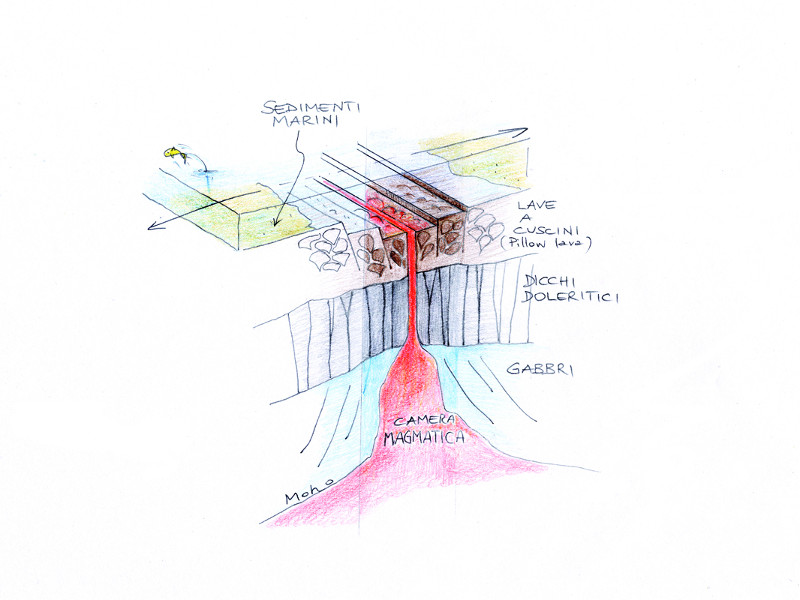Volcanic rock
The first volcanic eruptions occurred during the Upper Eocene epoch. These were both explosive and effusive eruptions with underwater emissions of fluid basalt lava. The basalt mixed with other eruption materials which, once they deposited on the ocean floor, became large banks of tuff. After a quieter period that lasted several million years, volcanic activity returned with a vengeance during the Early Oligocene (or Rupelian) epoch. The emission of extremely viscous magma, whose composition was different from previous types, led to the formation of the Euganean Hills' distinctive lava domes made up of rhyolite, trachyte and latite rock, all highly acidic volcanic rocks rich in silicon dioxide. The eruptions took place underwater but it is likely that the highest domes emerged above the ocean's surface, thus creating a small archipelago of volcanic islands. This situation continued until the start of the Quaternary Period (approximately two million years ago) when the entire basin rose up and large-scale flooding occurred, giving rise to the formation of the Po River plain.
After emerging from the sea, selective erosion over millions of years produced a rough, diverse landscape, breaking up and partly removing softer sedimentary layers and thus revealing the harder volcanic masses of smooth, sleek, cone-shaped peaks.

First eruptive cycle
(photo by: Dott.ssa Elena Anna Manfré)



